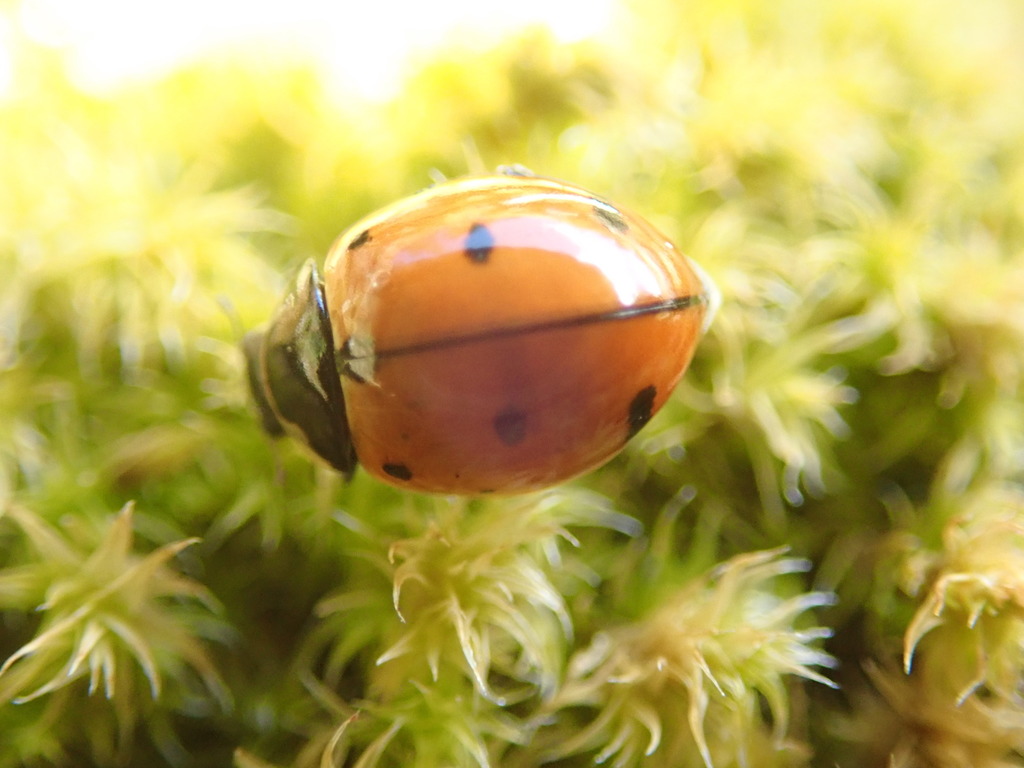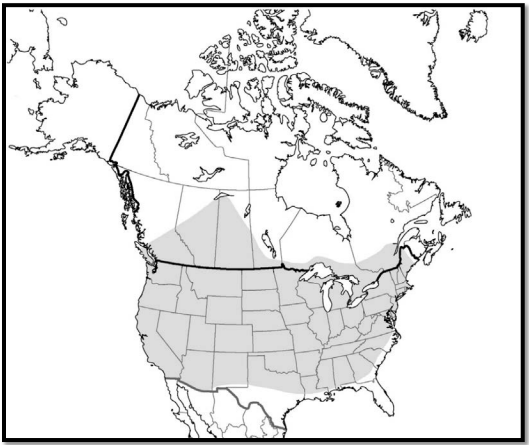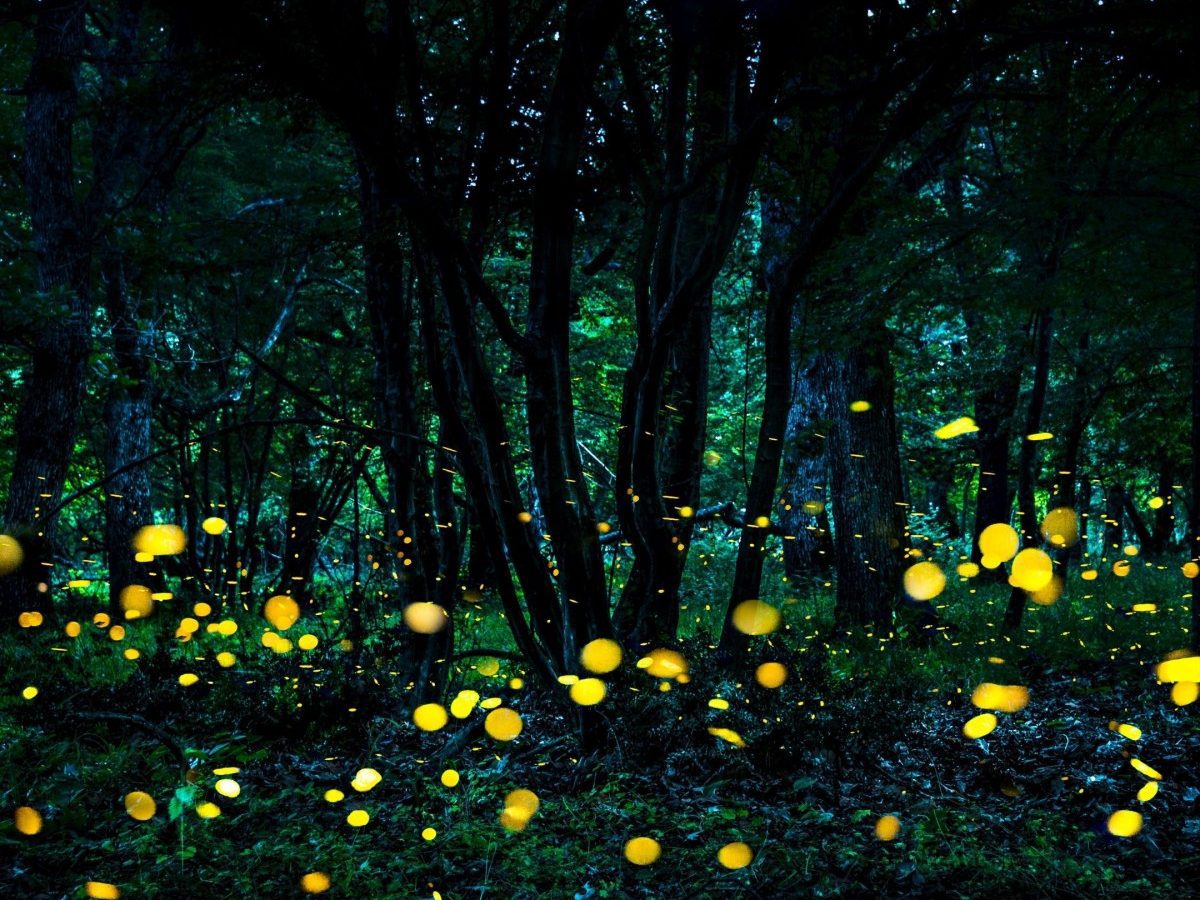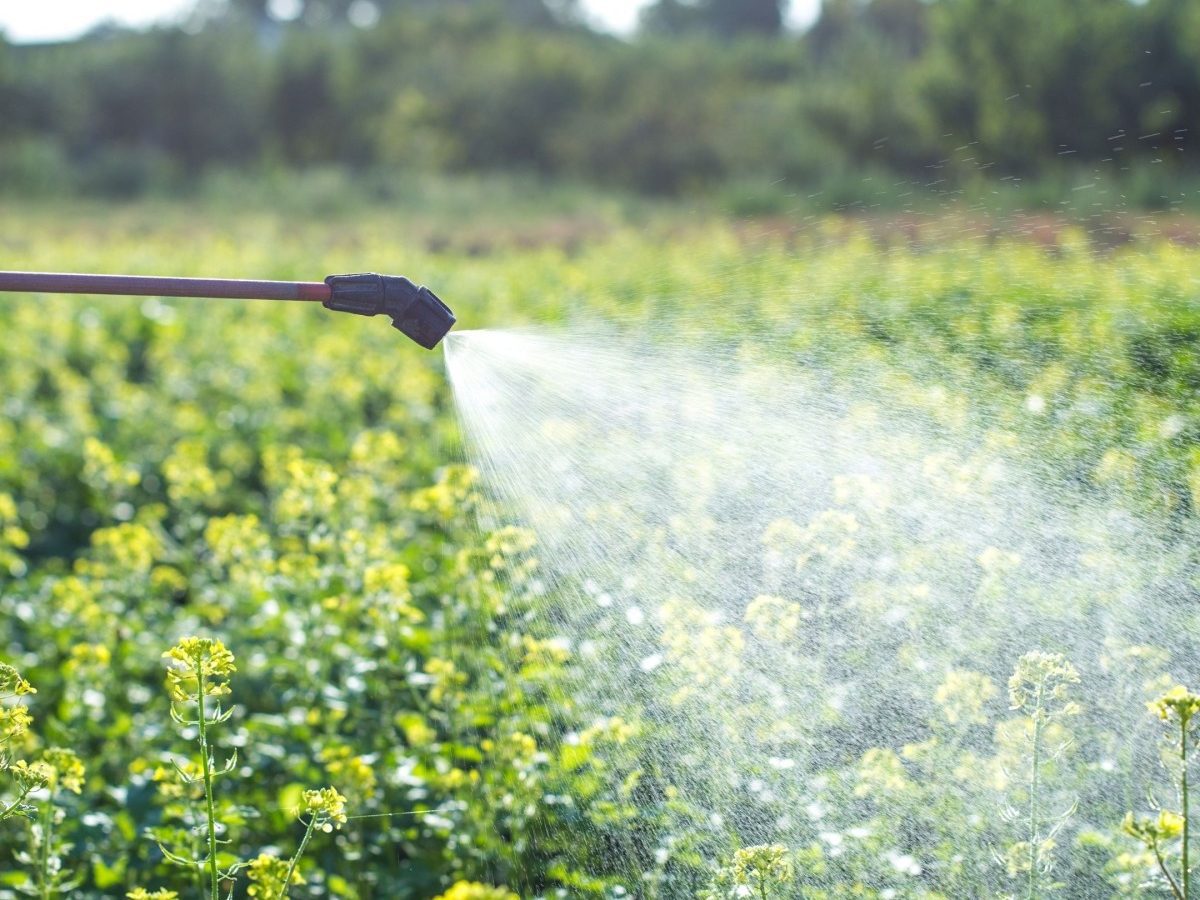
Species Identification:
The Nine-spotted Lady Beetle is a small beetle that ranges in size anywhere from 1.7 to 7 mm long. They have pale orange to red wings, and a black line that runs between them. They also generally have 9 black spots on their wings, giving them their name, however this number can vary. Their head is also black, with white markings between their eyes.
Diet:
The Nine-spotted Lady Beetle- like most Lady Beetles, are very beneficial for your garden. They primarily feed on aphids that can kill garden plants and agricultural crops. The Nine-spotted Lady Beetle will also feed on other soft-bodied insects they come across, as well as occasionally nectar and pollen from plants. They will also feed on other nuisance insects and their eggs such as spider mites, alfalfa weevils, leafhoppers, and scale insects. Nine-spotted Lady Beetles will capture and consume prey on the leaves of plants, using their wings to fly from plant to plant.

Biology and Behaviour:
Nine-spotted Lady Beetles are most active from late June to August. They can have up to two generations in one year, since it only takes 15-20 days for eggs to grow into adults. During the mating period, males can locate females using chemical and visual cues, and both sexes can have multiple partners. The female lays about 18 eggs on a variety of plant species, and will sometimes lay some unfertilized eggs with them to provide the successful larvae with a food source. Eggs will hatch into larvae in about 3 days, and larvae will change into pupae before their final adult stage. The average female Nine-spotted Lady Beetle can lay up to 690 eggs in her lifetime.
The Nine-spotted Lady Beetle uses their brightly coloured bodies as a warning to predators, which are mainly birds, frogs, wasps, dragonflies, and ants. While it has not been thoroughly researched, Nine-spotted Lady Beetles- like other Lady Beetle species, are thought to be able to excrete toxins when threatened.
These Lady Beetles will travel both long and short distances depending on habitat, temperature, and food availability. In the fall, adults will find a warm place to hibernate for the winter and will emerge in the spring when temperatures warm up.

Similar Species:
The Nine-spotted Lady Beetle is often confused with other Lady Beetle species, such as the Seven-spotted Lady Beetle, Five-spotted Lady Beetle, and the Convergent Lady Beetle. As expected, all of these species can be distinguished by the number of black spots on their wings. The Convergent Lady Beetle is one of the most common Lady Beetle species throughout North America, and has 12 black spots (6 on each wing).

Conservation and recovery strategies:
While Endangered species and their general habitats are protected both Federally and Provincially, no direct conservation or recovery strategies are in place for the Nine-spotted Lady Beetle. The Nine-spotted Lady Beetle has been found in both protected areas like national and provincial parks, but also private land in urban and agricultural environments, which make them difficult to protect. Tackling the main threats to the Nine-spotted Lady Beetle would be the first and most important steps to recovering this species.
Additional Resources:
- Government of Ontario’s Nine-spotted Lady Beetle page
- Vermont Centre for Ecostudies Nine-spotted Lady Beetle page
- COSEWIC’s 2016 Assessment and Report on the Nine-spotted Lady Beetle
- Nine-spotted Lady Beetle iNaturalist observations

Sources:
Government of Ontario. 2017. Nine-spotted Lady Beetle. Retrieved from https://www.ontario.ca/page/nine-spotted-lady-beetle
COSEWIC. 2016. COSEWIC assessment and status report on the Nine-spotted Lady Beetle Coccinella novemnotata in Canada. Committee on the Status of Endangered Wildlife in Canada. Ottawa. x + 57 pp. https://wildlife-species.canada.ca/species-risk-registry/virtual_sara/files/cosewic/sr_Nine-spotted%20Lady%20Beetle_2016_e.pdf
Vermont Centre for Ecostudies. N.d. Nine-spotted Lady Beetle (Coccinella novemnotata) Herbst, 1793. Retrieved from: https://val.vtecostudies.org/projects/lady-beetle-atlas/nine-spotted-lady-beetle/








